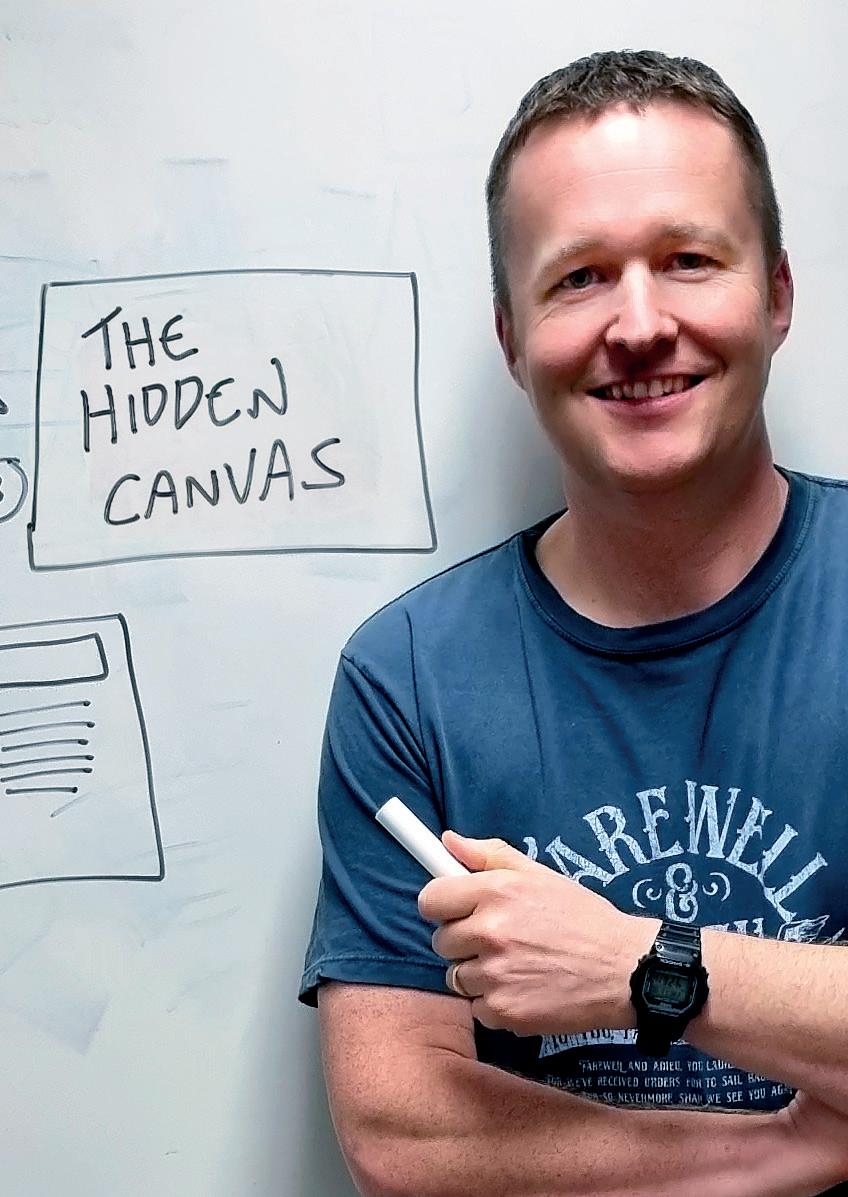
5 minute read
The Hidden Canvas
Lewis Carr
Lessons from my journey as an LMS UX Designer
The first time I used a Learning Management System, I was excited to develop beautiful courses. Still, I was soon met with an interface that actively resisted my understanding. I remember thinking, “If only this felt more like a website and less like a desktop application.”
I’ve always been a designer, and I even plied my trade as a web developer (remember those?) back in 1999 whilst still at University, in a world before YouTube and when Yahoo was bigger than Google.
Fast forward several years, and I’m still sticking to my original mantra, “This needs to feel more like a modern website”. I made it my mission to redesign LMS experiences, and I’ve been doing it ever since. Each time, I significantly improve how users interact with the platform.
It’s been an enlightening journey filled with pain points, unexpected challenges, and invaluable lessons. Today, I’d love to share some of those insights with you.
Drawing inspiration from everywhere
Commercial platforms like Netflix, Instagram and LinkedIn have significantly influenced online engagement. Their interfaces are intuitive, considering each platform’s complexity, yet they manage vast amounts of information without overwhelming users.
When I design themes, I often borrow elements from these platforms. For instance, I always admired Netflix’s seamless video playback and saw it as an excellent model for e-learning courses, while LinkedIn’s professional layouts inspire dashboard designs for educators.
When I first pitched the idea of “the Netflix of eLearning”, everyone told me binge-learning was bad, but I went ahead and made Moodle look like Netflix anyway. In hindsight, I shouldn’t have used the word “binge-learning” as, let’s face it, who wants to binge-learn? It’s not exactly Stranger Things or Game of Thrones we’re talking about here.
I was trying to borrow ideas to present a vast array of resources and courses and present them in a way that made sense to the user. It is based on a concept that they were not only familiar with but on an idea that is integrated into everyday life, something that has become “second nature”.
Becoming an LMS UX designer wasn’t just about fixing unattractive pages. It was about revolutionising how learners interact with online platforms. I wanted to contribute to a learning environment that mirrors the best of the internet.
My design process
Every theme I design starts with understanding the end-user. Who are they? What challenges do they face? Next comes sketching, where my ideas translate to paper (well, screen).
For this, I use online wireframing tools to draw a much simpler interface and then turn these into interactive prototypes. This allows me to click things and move between pages without me having to start coding.
Finally, after several million iterations, I have a theme that is not just pretty but functional and user-friendly. One that no longer looks like an application but an elegant, clean, simple, yet fully branded website.
Now I fully understand that design isn’t just about aesthetics. It’s about functionality, efficiency, and the user experience. However, aesthetics are a crucial component.
Just as we “eat with our eyes”, we judge apps and games based on their look and feel. So even the best functioning UX needs to stand side-by-side with all the other “cool looking” applications we use in our daily lives.
Principles like the hierarchy of information, consistency, and feedback loops do guide my designs (I don’t want readers to think I just wing it), ensuring users find them intuitive and effective, but unless I can make the finished product look like something Apple, Instagram, or Netflix may have designed, then it’s a much harder sell to the end-user.
Lessons learned
Every project has taught me something new. But the most significant lesson has been the importance of empathy. Truly placing yourself in the shoes of learners and educators, understanding their struggles, and crafting solutions for them is the heart of UX design.
Throughout my years, I have designed some great themes but also some bad ones. Looking back at some of my early work, some designs looked good “back in the day” but have dated in the years since.
Building for accessibility is making it more difficult for designers. Creating innovative and beautiful themes and ensuring AA compliance simultaneously is a welcome and necessary challenge, but one that does pose limitations on the design. Sometimes, I have to reign it in.
My final lesson in my journey is that it’s OK to trust my instincts and understand that not everyone will like my work. Like an artist or musician, my style won’t be to everyone’s taste, but I must keep pushing the boundaries and innovating in this space. I must stay abreast of what is happening in the world and ensure that any LMS I design can sit proudly at the big table, and if I have to “borrow” some ideas from Silicon Valley, then so be it.
Becoming an LMS UX Designer has been an enriching journey. Yes, there are challenges. But the joy of witnessing students and educators effortlessly navigate a platform I’ve designed and the knowledge that I’m aiding their educational journey makes it all worthwhile.










